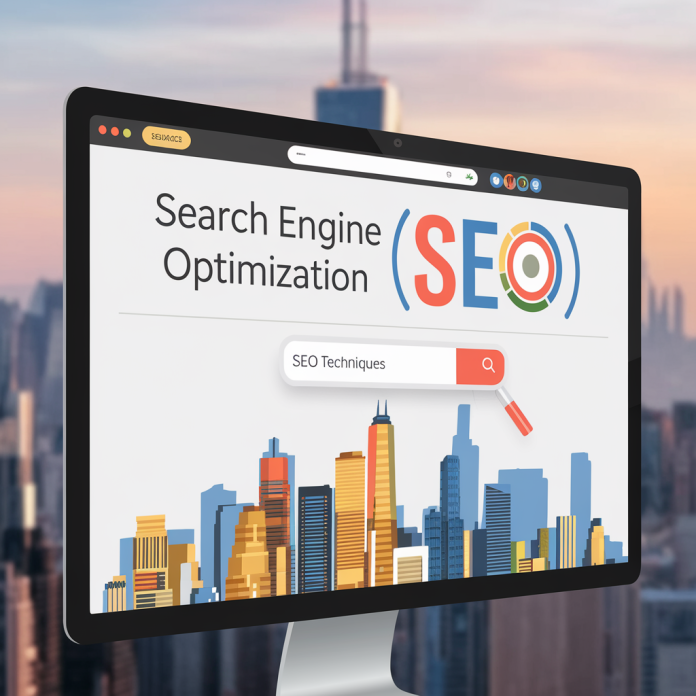Search Engine Optimization (SEO) remains one of the most effective tools in digital marketing, enabling businesses to increase their online visibility, attract organic traffic, and rank higher on search engines like Google. However, despite its growing importance, SEO is often misunderstood, leading to a range of misconceptions and myths.
In this article, we aim to clear the fog surrounding SEO, debunk common myths, and provide a comprehensive guide to what truly works in today’s search landscape. From guest posts to keyword strategy, we will address the critical aspects of SEO that businesses should focus on.
SEO Myths: A Barrier to Effective Digital Marketing
Before we dive into what works, it’s essential to examine the common myths that continue to confuse marketers and business owners. These misconceptions can lead to ineffective strategies, wasted resources, and missed opportunities. Let’s take a closer look at some of these myths.
Myth 1: SEO Is a One-Time Fix
One of the biggest misconceptions about SEO is that it’s a one-time project. Many believe that once their website is optimized, they can sit back and relax as traffic floods in. This is far from the truth.
In reality, SEO is an ongoing process. Search engines are constantly evolving, with algorithm updates that can change how websites are ranked. New content needs to be created, existing content should be updated, and backlinks must be regularly acquired to maintain and improve rankings.
The SEO landscape is dynamic, and businesses must adapt to keep up with changes in search engine algorithms, user behavior, and competitor strategies. Continuous efforts, including regular audits and optimization of on-page and off-page elements, are required to stay competitive.
Myth 2: Keyword Stuffing Will Boost Rankings
In the early days of SEO, websites could rank well simply by stuffing keywords into their content. This often led to awkward, unnatural writing, but it was effective — for a while. However, keyword stuffing is now one of the most significant SEO mistakes you can make.
Search engines, especially Google, have evolved to prioritize high-quality, user-friendly content over keyword-heavy pages. Today, the focus is on delivering valuable, relevant, and engaging content to the user, rather than simply inserting keywords at every opportunity.
Overusing keywords can actually result in penalties, making your website more difficult to find. Instead, aim to use keywords naturally and focus on user intent. This is where understanding long-tail keywords and their relevance to your target audience comes into play.
Myth 3: Link Quantity Matters More Than Quality
For years, building backlinks was considered one of the most important ranking factors in SEO. However, not all backlinks are created equal. While backlinks are still crucial, the quality of links matters much more than the sheer number of links pointing to your website.
Today, search engines focus on the authority and relevance of the websites linking to you. A backlink from a reputable, high-authority website is far more valuable than numerous links from low-quality or irrelevant sites.
This is where guest posting comes into play. Writing guest posts for credible websites within your niche can help you earn high-quality backlinks, improve your authority, and drive targeted traffic. Guest posting not only improves your SEO but also helps you build relationships with influencers in your industry.
Myth 4: Social Signals Directly Affect SEO Rankings
Many marketers believe that social media signals — such as likes, shares, and comments — directly influence search engine rankings. While it’s true that social media can drive traffic to your website and help with brand visibility, there is no definitive evidence to suggest that social signals directly impact SEO rankings.
What social media does provide, however, is indirect value. Increased brand awareness, engagement, and the potential for viral content can lead to more inbound links, which can positively affect your SEO. Social media helps build your online presence, driving more traffic to your website, and creating opportunities for organic growth.
Myth 5: SEO Can Guarantee Instant Results
SEO is often seen as a quick-fix solution for immediate results. However, achieving and maintaining high rankings in search engines is a long-term process. While some changes may have an immediate impact, most SEO efforts take time to show significant results.
Search engines need time to crawl, index, and assess your site. Content updates, backlink acquisitions, and keyword optimization all take time to affect rankings. If you’re looking for immediate results, paid advertising (such as Google Ads) might be a better option in the short term.

What Really Works in SEO Today
Now that we’ve debunked some of the most common SEO myths, let’s turn our attention to what actually works in today’s SEO landscape. These strategies are backed by data, industry best practices, and evolving search engine algorithms.
1. Quality Content Is King
If there’s one thing that remains constant in the world of SEO, it’s the importance of high-quality content. Search engines like Google prioritize content that provides value to users. This means content that is informative, engaging, well-written, and tailored to meet the needs of your target audience.
Google’s algorithms are designed to evaluate content based on its relevance, usefulness, and ability to answer a user’s query. This is why focusing on creating valuable content should always be at the top of your SEO strategy.
A good SEO strategy doesn’t just involve keywords; it’s about creating content that addresses the specific pain points of your audience, offering solutions, and ensuring the content is comprehensive and easy to digest. The goal is to answer user questions, solve problems, and enhance their experience on your site.
2. Optimize for User Experience (UX)
User experience (UX) is a crucial factor in modern SEO. Google’s algorithms increasingly focus on how users interact with websites. If your site is slow, hard to navigate, or mobile-unfriendly, users are likely to bounce, and search engines will take notice.
Here are some key aspects of UX that influence SEO:
- Page Speed: Google has made it clear that page speed is a ranking factor. A slow-loading page can negatively impact both user experience and SEO rankings. Tools like Google PageSpeed Insights can help you identify areas for improvement.
- Mobile Optimization: With the rise of mobile internet usage, mobile-friendliness has become essential for SEO. Ensure your site is responsive and provides a seamless experience across devices.
- Clear Navigation: A well-organized, easy-to-navigate website improves UX and encourages users to spend more time on your site, reducing bounce rates.
3. Quality Backlinks Remain Crucial
As mentioned earlier, not all backlinks are equal. The focus now is on earning high-quality backlinks from authoritative and relevant websites. One effective way to build quality backlinks is through guest posting.
Guest posting on reputable websites within your niche provides an opportunity to share your expertise, build relationships, and earn valuable backlinks. These backlinks not only improve your domain authority but also drive targeted traffic from readers who are interested in your content.
When pursuing guest post opportunities, make sure the sites you contribute to are reputable, relevant, and authoritative. It’s important to ensure that the content is valuable and aligns with the interests of the audience.
4. Technical SEO Should Not Be Overlooked
Technical SEO refers to the optimization of the technical aspects of a website to improve its visibility and crawling by search engines. While on-page content is vital, technical SEO ensures that search engines can easily access and index your website.
Some important technical SEO elements include:
- XML Sitemap: Ensure that search engines can easily find and crawl your pages by submitting an XML sitemap.
- Robots.txt: This file tells search engines which pages to crawl and which to avoid. Properly configuring this file ensures that your site is indexed correctly.
- Structured Data: Adding schema markup can help search engines better understand your content and display rich results in search results.
- HTTPS Security: Google favors websites with HTTPS encryption. Ensure your website is secure and uses an SSL certificate.
5. Local SEO Matters More Than Ever
For businesses with physical locations, local SEO is crucial. Optimizing your website for local search helps you show up in local search results when people search for products or services near them.
Key local SEO strategies include:
- Google My Business (GMB): Claim and optimize your Google My Business profile to ensure accurate business information appears in local search results and Google Maps.
- Local Citations: Ensure your business is listed on relevant local directories and that your name, address, and phone number (NAP) are consistent across all platforms.
- Localized Content: Create content that speaks to your local audience, using location-based keywords and mentioning local events, landmarks, or community topics.
6. Voice Search and AI Are Changing SEO
As voice search and AI-powered devices like Siri, Alexa, and Google Assistant become more popular, optimizing for voice search is becoming increasingly important. People use voice search differently from traditional typing, often phrasing queries more conversationally.
To optimize for voice search, consider the following:
- Long-Tail Keywords: Voice search queries tend to be longer and more conversational. Optimize for long-tail keywords that reflect how people speak.
- Featured Snippets: Aim to create content that answers questions directly, as featured snippets often appear in voice search results.
- Local Focus: Many voice searches are local in nature, so ensure your business is optimized for local SEO.
Conclusion
In today’s fast-evolving SEO landscape, staying up to date with the latest strategies is crucial. By busting common myths and focusing on what truly works — quality content, high-quality backlinks (including guest posts), a positive user experience, and technical SEO — businesses can improve their search rankings and achieve long-term success.
SEO is not a one-time fix, and it certainly isn’t a magic bullet for instant results. However, with consistent effort and a focus on providing value to users, you can master SEO and see tangible improvements in your website’s performance.
By focusing on proven strategies and steering clear of outdated myths, businesses can navigate the complex world of SEO and drive meaningful, sustainable growth.




